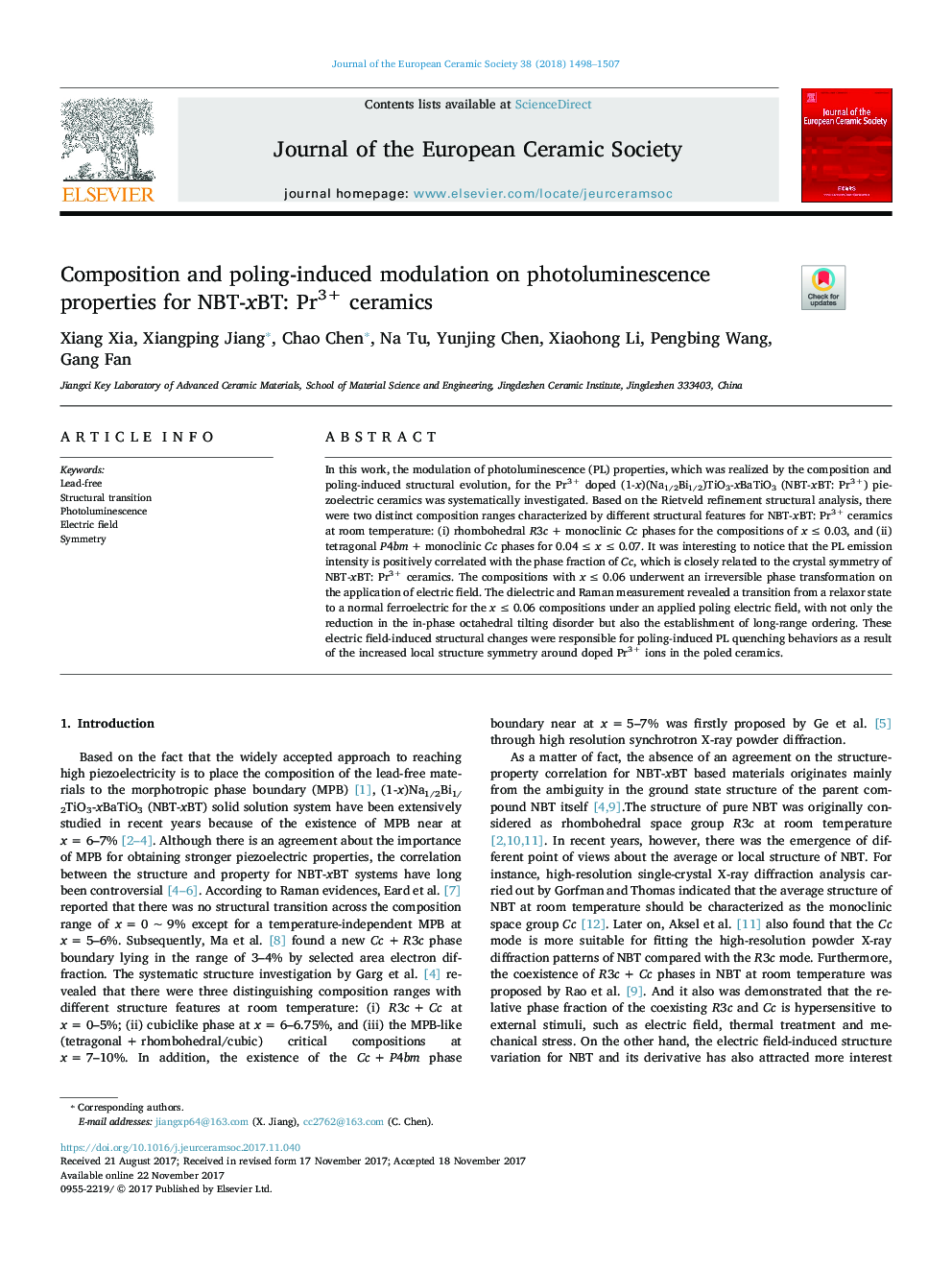| Article ID | Journal | Published Year | Pages | File Type |
|---|---|---|---|---|
| 7898694 | Journal of the European Ceramic Society | 2018 | 10 Pages |
Abstract
In this work, the modulation of photoluminescence (PL) properties, which was realized by the composition and poling-induced structural evolution, for the Pr3+ doped (1-x)(Na1/2Bi1/2)TiO3-xBaTiO3 (NBT-xBT: Pr3+) piezoelectric ceramics was systematically investigated. Based on the Rietveld refinement structural analysis, there were two distinct composition ranges characterized by different structural features for NBT-xBT: Pr3+ ceramics at room temperature: (i) rhombohedral R3c + monoclinic Cc phases for the compositions of x â¤Â 0.03, and (ii) tetragonal P4bm + monoclinic Cc phases for 0.04 â¤Â x â¤Â 0.07. It was interesting to notice that the PL emission intensity is positively correlated with the phase fraction of Cc, which is closely related to the crystal symmetry of NBT-xBT: Pr3+ ceramics. The compositions with x â¤Â 0.06 underwent an irreversible phase transformation on the application of electric field. The dielectric and Raman measurement revealed a transition from a relaxor state to a normal ferroelectric for the x â¤Â 0.06 compositions under an applied poling electric field, with not only the reduction in the in-phase octahedral tilting disorder but also the establishment of long-range ordering. These electric field-induced structural changes were responsible for poling-induced PL quenching behaviors as a result of the increased local structure symmetry around doped Pr3+ ions in the poled ceramics.
Related Topics
Physical Sciences and Engineering
Materials Science
Ceramics and Composites
Authors
Xiang Xia, Xiangping Jiang, Chao Chen, Na Tu, Yunjing Chen, Xiaohong Li, Pengbing Wang, Gang Fan,
